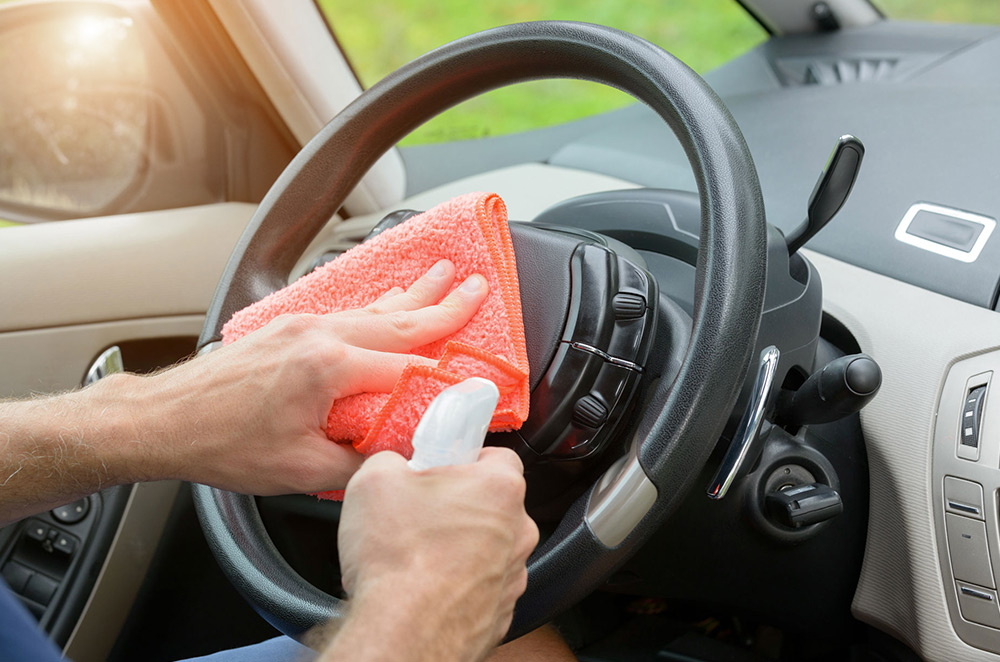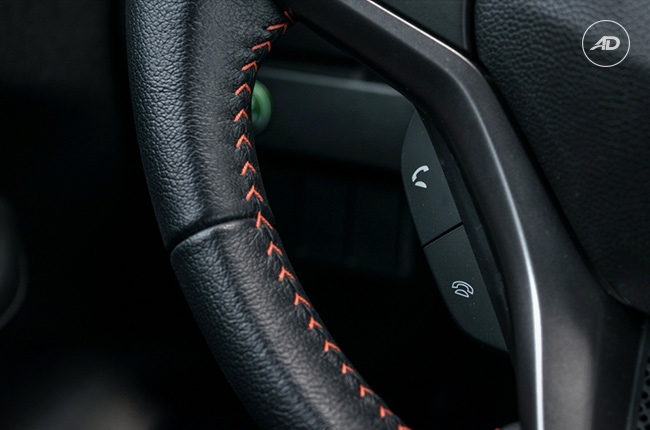
Cleaning your car’s interior can be tricky, more so, if it’s the steering wheel that you want to rid of dirt, built-up grime, bacteria, and body oils. Since it’s the part of your car that you touch the most (hopefully), then it would be safe to assume that it’s also the dirtiest. Just imagine the times you drove after changing your tires, or after you’ve checked something under the hood. Even those who regularly use lotion for their hands can also make for a dirty steering wheel.
While cleaning the steering wheel with just water is tempting, it won’t completely do the trick because the dirt build up might be too much for that. On the other hand, using chemicals is dangerous, especially if you’re unsure if that chemical will damage the material. To help you with that, we’ve made a handy dandy guide for you.
Identify the steering wheel material
Steering wheels come in a variety of materials such as plastic, polyurethane, faux leather, synthetic resins, natural wood, and leather. Finding out which one your steering wheel is made of can help you determine which cleaning agents are good to use. Each one has its own dos and don’t when it comes to cleaning, so it’s best to be careful. To find out what kind of material your steering wheel is made out of, you can check your owner’s manual or check the car’s brochure online if it’s still available. Remember, polyurethane material will look and almost feel like real leather, so it’s best to be sure before you tackle cleaning it.
Plastics

Steering wheels that are made out of plastics are most often found in entry-level vehicles. It’s the easiest to clean among the others as you will only need to use soap, water, and dry cloth. You can also use a sprayer to better distribute the liquid soap onto the surface of the wheel but make sure you avoid spraying the liquid on buttons if there are any. The process of cleaning is straightforward as all you will need to do is spray the wheel with the soap solution, rinse it with water, then dry it with a clean cloth.
Synthetic Resins

Often confused as plastic, synthetic resin is also among one of the easier steering wheel materials to clean. Just like with a plastic wheel, all you need is soap, water, and a clean cloth. Just follow the same steps given for the plastic-made steering wheels and you should be fine. It is important to remember that using polish on synthetic resins can make it more slippery and may hinder your ability to properly grip the wheel, so it is best to avoid them.
Natural Wood

Steering wheels made entirely of real wood are now a rare sight on modern vehicles, however, some vehicles may still have them, at least in the form of wooden inserts. That being said, you will need some wood polish in order to keep it clean and protected. Be careful with the application as putting too much pressure on the surface may end up scratching the finishings instead of protecting it. It is best to use a microfiber cloth when cleaning the wheel as it is designed to help prevent damage from heavy rubbing and scratching. It also comes with the benefit of lifting up the dirt from the wheel.
Polyurethane/Faux-leather

Polyurethane, sometimes called faux-leather/fake leather, is the most common type of steering wheel. It’s easy to clean with plain soap and water, but you can also use chemicals to enhance the material. Make sure you clean them thoroughly as they often come with fake stitches that can easily catch dirt and grime.
Leather

Leather types are usually found on top-of-the-line variants of vehicles and are the ones that can give you the most pleasure when holding them. Use a leather cleaner or conditioner for this one, instead of using soap and water as the latter can damage the integrity of the leather. Remember to spray onto the cloth (or microfiber towel) and not directly onto the steering wheel. Be careful of using too much force to remove built-up dirt on it as you can scratch its surface. You will also need to let the chemical dry first before using it.
Latest Features
-
The difference between wax and polish / Tips & Advice
Confused about whether your car needs a wax or polish? This article will guide you on what they are and what to choose for your car.
-
The 6 things every Ford Ranger must pass before it leaves the factory / Featured Article
Every Ford Ranger, from the base model to the Ranger Raptor, goes through a full inspection process before it leaves the factory. This includes six steps that make sure it’s ready to drive a...
-
Which GAC AION EV is best for your everyday lifestyle? / Featured Article
The GAC AION lineup has something for everyone, maybe you're after space, speed, or just a smooth city drive. Here's a quick breakdown of which model might work best for your day-to-day life...
Popular Articles
-
Cheapest cars under P700,000 in the Philippines
Jerome Tresvalles · Sep 02, 2024
-
First car or next car, the Ford EcoSport is a tough package to beat
Jun 18, 2021
-
Car Maintenance checklist and guide – here’s everything you need to know
Earl Lee · Jan 12, 2021
-
Most fuel efficient family cars in the Philippines
Bryan Aaron Rivera · Nov 27, 2020
-
2021 Geely Okavango — Everything you need to know
Joey Deriquito · Nov 19, 2020
-
Family cars in the Philippines with the biggest trunks
Sep 20, 2023
-
Head to head: Toyota Rush vs. Suzuki XL7
Joey Deriquito · Oct 28, 2020
-
Why oil changes are important for your car
Earl Lee · Nov 10, 2020
-
2021 Kia Stonic — What you need to know about it
Joey Deriquito · Oct 16, 2020
-
Top 7 tips for buying a used car in the Philippines
Joey Deriquito · Nov 26, 2020



